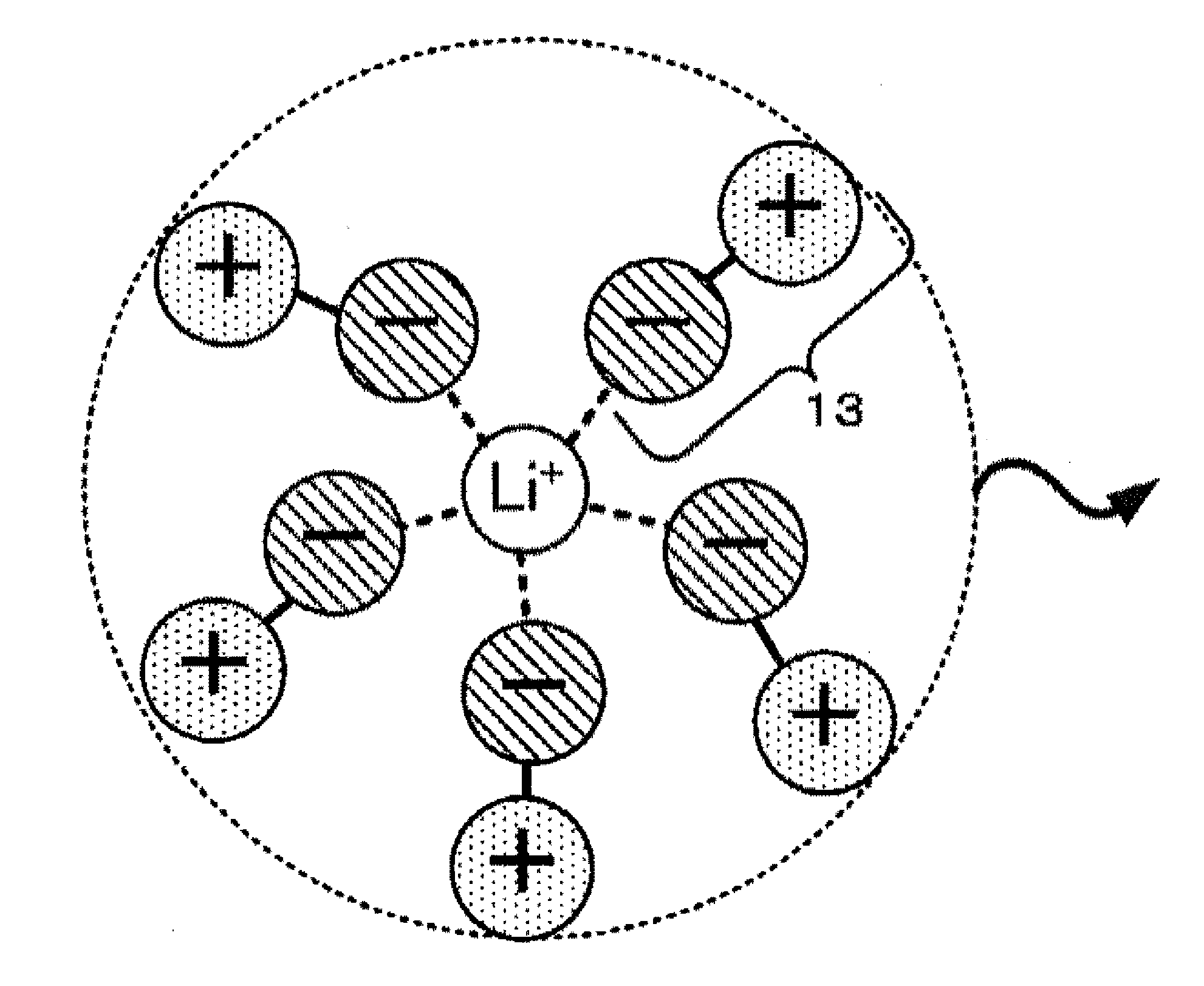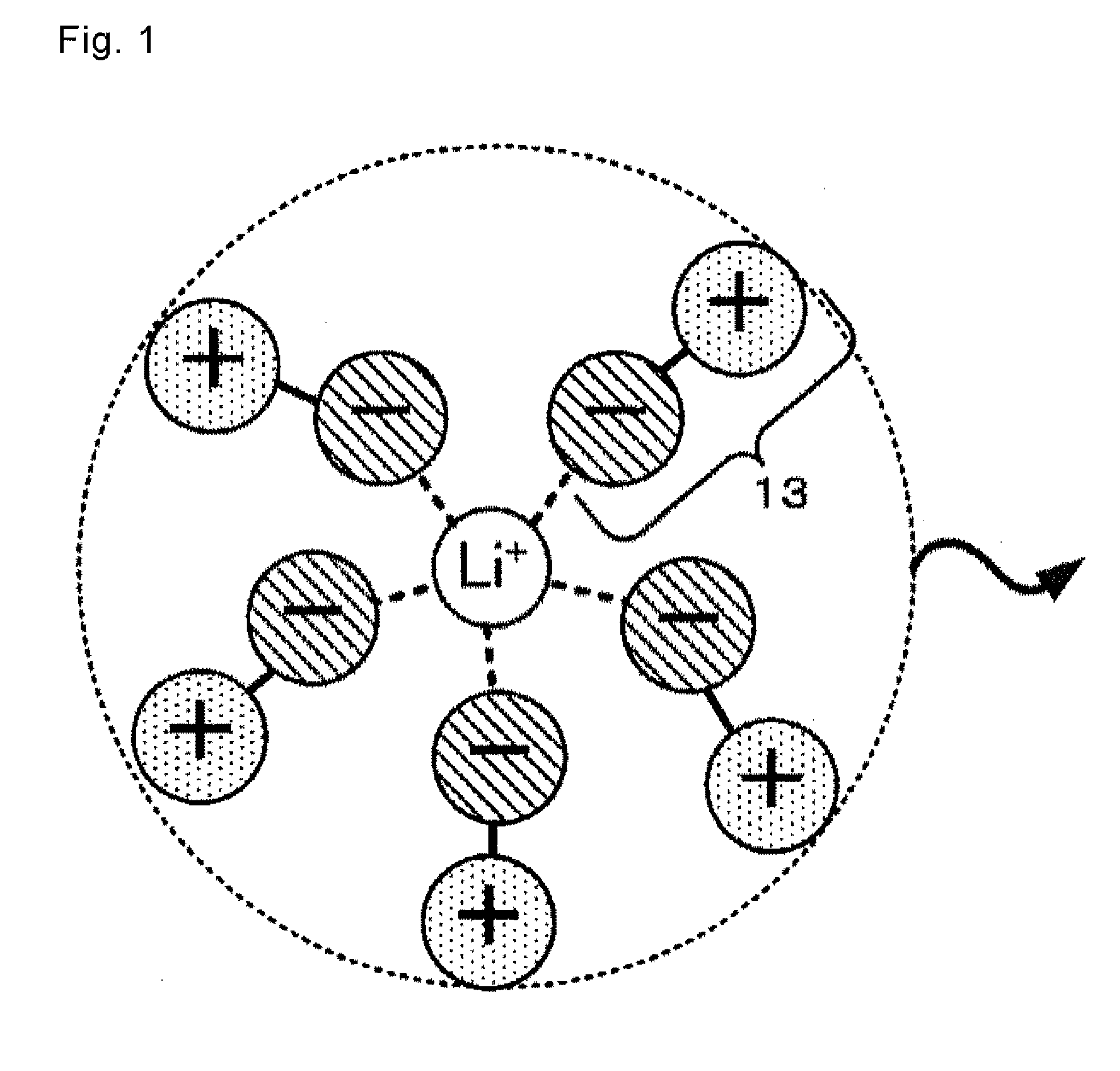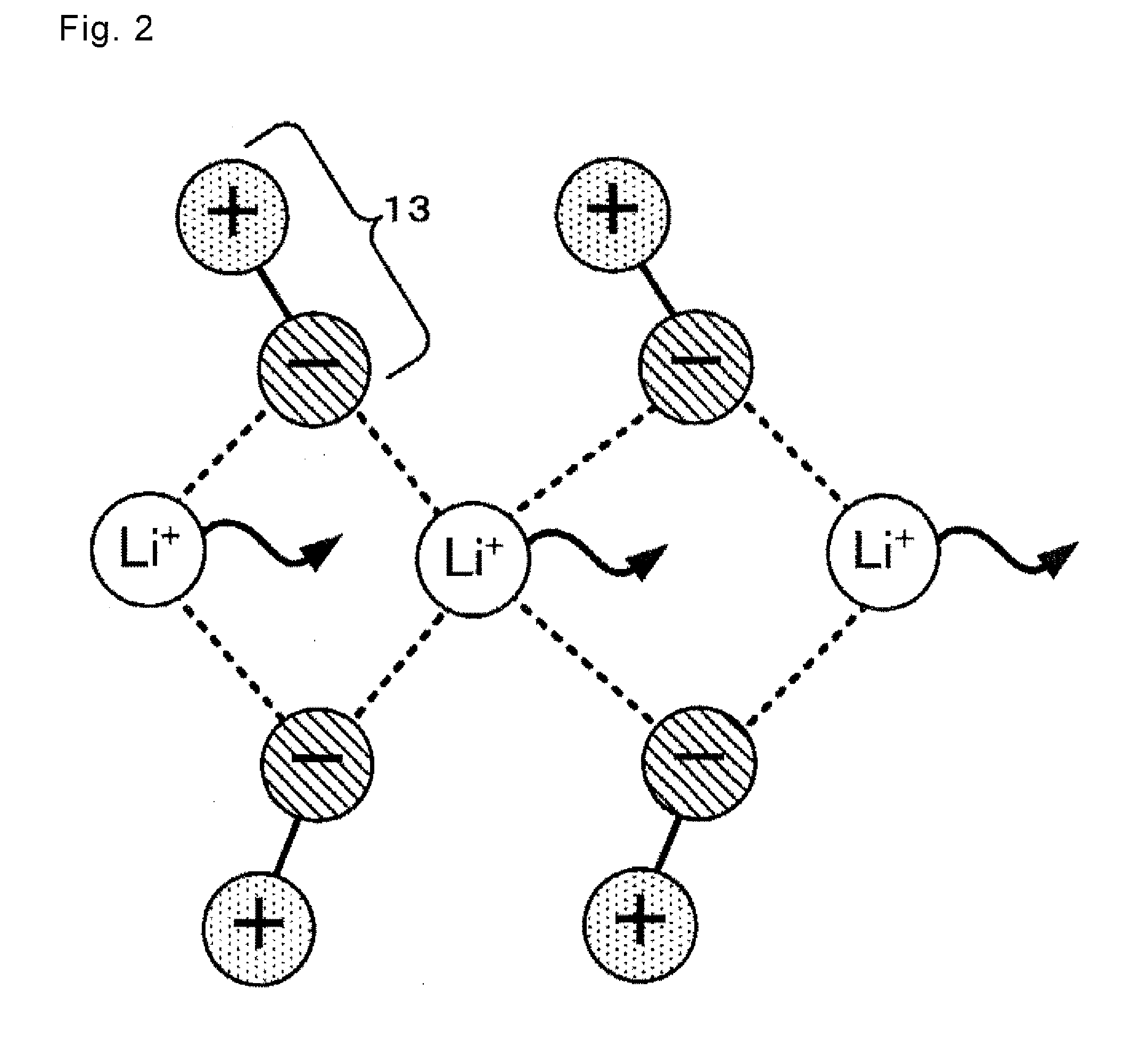Liquid electrolyte for batteries, method for producing the same, and battery comprising the same
a technology of liquid electrolyte and battery, which is applied in the direction of aqueous electrolyte fuel cells, fuel and primary cells, electrochemical generators, etc., can solve the problems of limited reliability improvement of conventional lithium secondary batteries, and achieve the effect of reducing viscosity and increasing lithium ion conductivity of liquid electroly
- Summary
- Abstract
- Description
- Claims
- Application Information
AI Technical Summary
Benefits of technology
Problems solved by technology
Method used
Image
Examples
example 1
[0148]First, 1-ethyl-3-methyltetrazolium-5-olate (hereinafter may be referred to as EMTO) was synthesized by the above method and mixed with lithium bis(trifluoromethanesulfonyl)amide (hereinafter may be referred to as LiTFSA) (manufactured by Kojundo Chemical Laboratory Co., Ltd.) so as to have a lithium salt concentration of 0.1 mol / kg. After homogenously dissolving the mixture, the mixture was stirred for 3 hours, thus producing the liquid electrolyte for lithium batteries of Example 1.
example 2
[0149]First, EMTO was synthesized by the above method and mixed with LiTFSA so as to have a lithium salt concentration of 0.32 mol / kg. After homogenously dissolving the mixture, the mixture was stirred for 3 hours, thus producing the liquid electrolyte for lithium batteries of Example 2.
example 3
[0150]First, EMTO was synthesized by the above method and mixed with LiTFSA so as to have a lithium salt concentration of 0.35 mol / kg. After homogenously dissolving the mixture, the mixture was stirred for 3 hours, thus producing the liquid electrolyte for lithium batteries of Example 3.
PUM
| Property | Measurement | Unit |
|---|---|---|
| concentration | aaaaa | aaaaa |
| ion conductivity | aaaaa | aaaaa |
| chemical energy | aaaaa | aaaaa |
Abstract
Description
Claims
Application Information
 Login to View More
Login to View More - R&D
- Intellectual Property
- Life Sciences
- Materials
- Tech Scout
- Unparalleled Data Quality
- Higher Quality Content
- 60% Fewer Hallucinations
Browse by: Latest US Patents, China's latest patents, Technical Efficacy Thesaurus, Application Domain, Technology Topic, Popular Technical Reports.
© 2025 PatSnap. All rights reserved.Legal|Privacy policy|Modern Slavery Act Transparency Statement|Sitemap|About US| Contact US: help@patsnap.com



